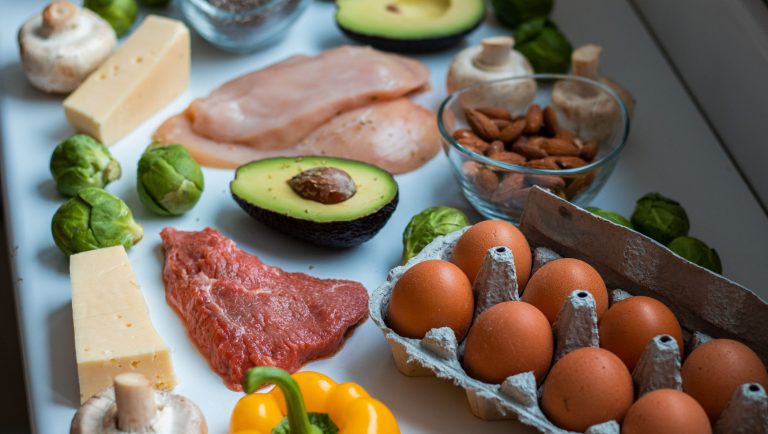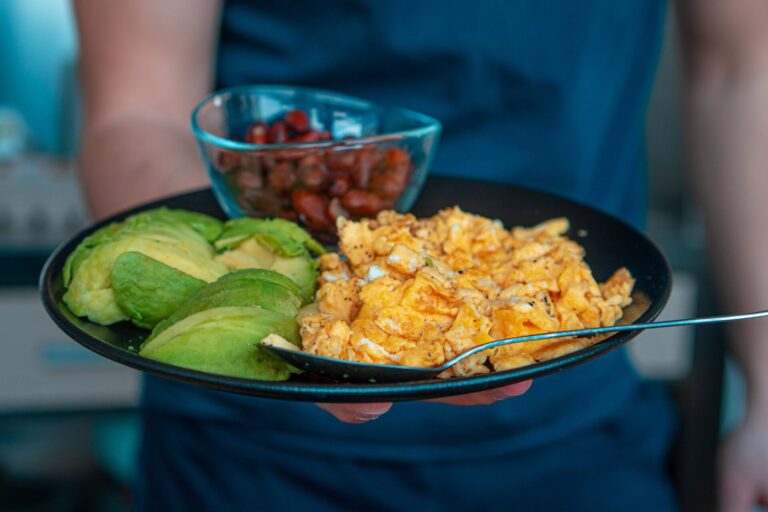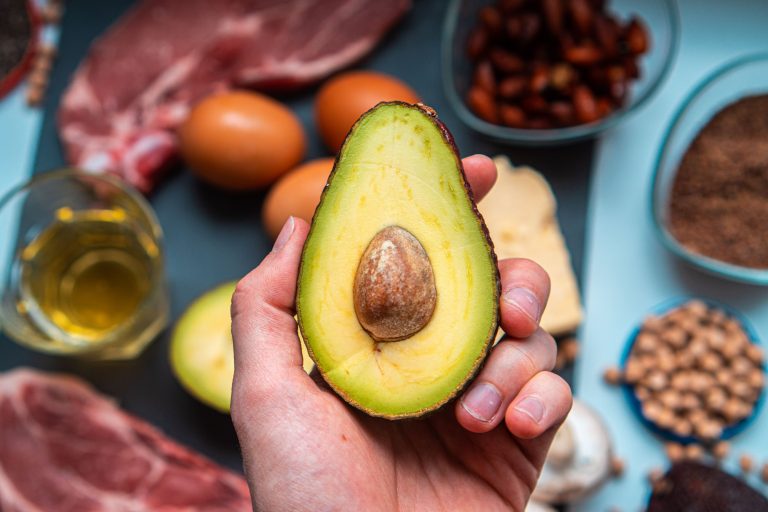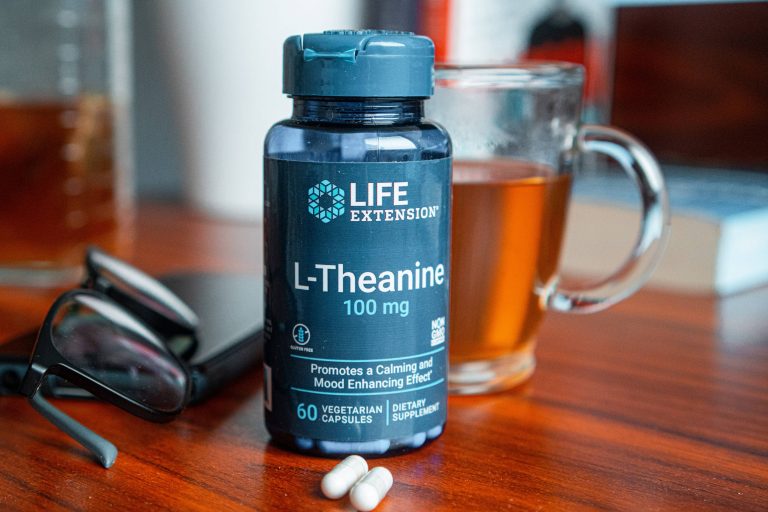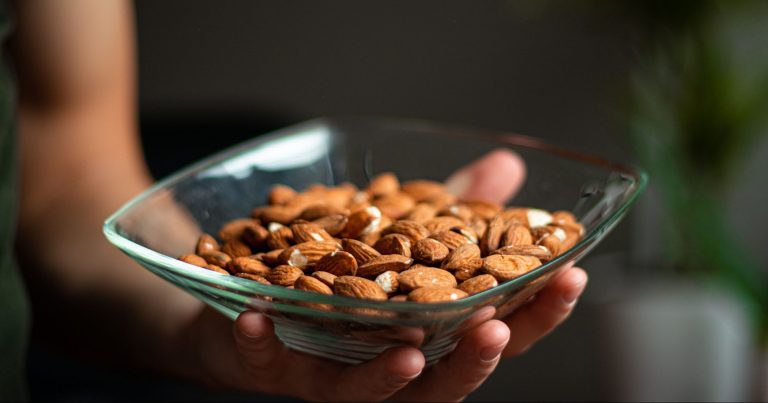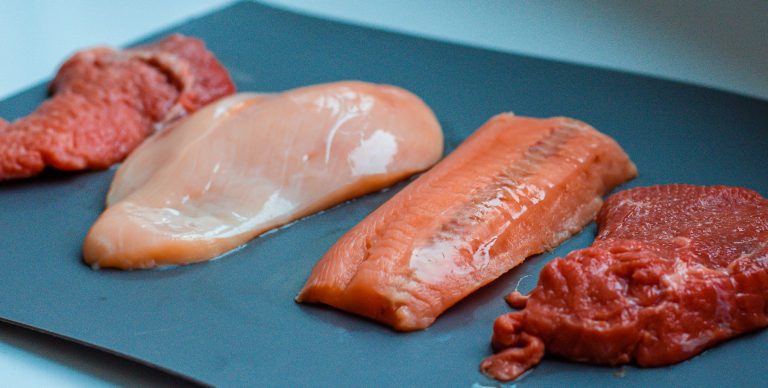The Paleo Diet 101: Foods, Pros & Cons, and Benefits
What is the Paleo Diet?
The Paleo Diet is a specific dietary pattern or style of eating which incorporates Paleolithic foods that our ancestors ate. It has become popular among athletes, nutritionists, celebrities, and health-conscious people, due to its potential for health and performance enhancement.
The Paleolithic era is characterized by eating foods such as meat, veggies, fruits, and nuts. The so-called cavemen diet strictly excludes any processed foods such as sugars, wheat, legumes, whole grains, pastry, and baked stuff. (1) (2) (3)
Eating this diet can improve brain performance, overall health and development, muscle growth, brain performance, heart health, and potentially sleep and mood while increasing your energy levels. A lot of success stories exist on the internet about Paleo and body recomposition, which is putting on muscle and losing fat at the same time.
The Paleo Diet
Also known as an Ancestral diet or The Primal diet, Paleo has a long history of practice in the Paleolithic era. The purpose of Paleo dieting in modern times is to improve our life quality, suffer fewer diseases, feel better and more energized, reduce inflammation, and improve sleep and mood.
Genetically, humans were better at processing much more plants, meat, and raw, unprocessed foods back in history. This is one of the dominant reasons behind their health, along with an active lifestyle, continuous movement, and healthy relationships.
In modern times, with our diets full of processed sugars, wheat, grains, and gluten people suffer a lot more. We are talking about inflammation, slower regeneration, feeling sick, poor immune system function, gaining weight, or insulin resistance.
The whole point of this diet is to ditch sugars so you rely on natural foods, that cavemen ate. This food can be picked up from the ground, like fruits and veggies or it should be something that can fly, walk or swim, which means animal meat, whether it’s a fish, bird, or cattle.
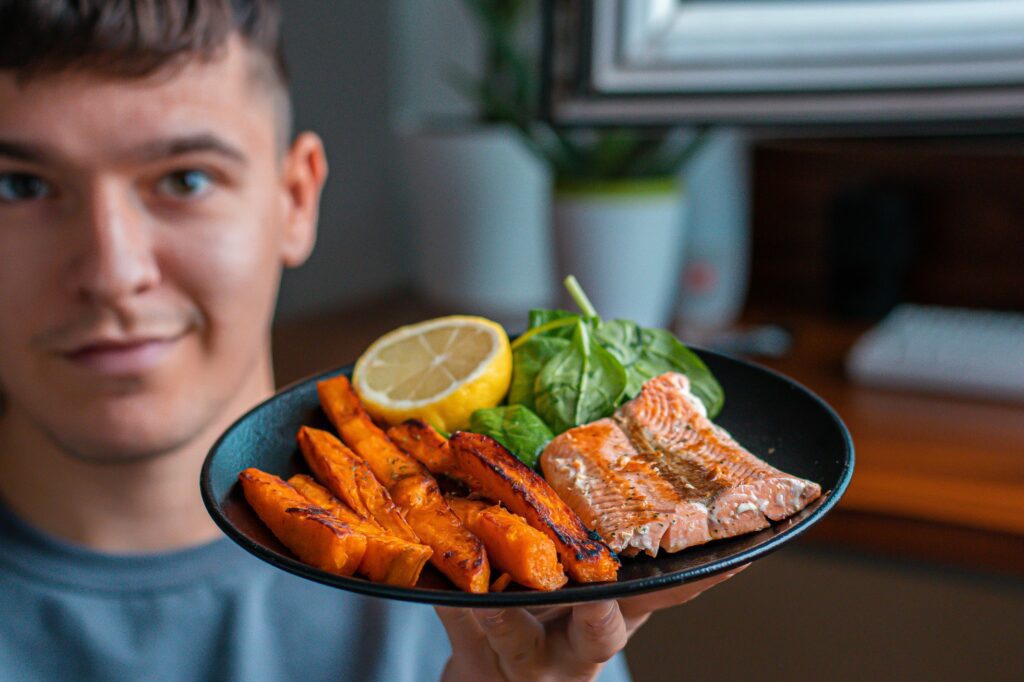
Calories on The Paleo Diet
One of the best things about the Paleo diet is it is not calorie restrictive. This means you can eat as long as you are hungry. However, people who overeat, even if they feed on protein and healthy fat while excluding carbs like wheat sodas, pastry, and rice, will gain weight.
Can I lose weight on the Paleo Diet?
The answer is both yes and no. In any diet, you can lose or gain weight, depending on your calorie intake. The basic math is if your caloric intake is higher than the calories you burn, you will gain weight. If you eat fewer calories than you burn, you will lose weight.
However, with low-carb, high-fat diets, the goal is to use fat for fuel, which can improve fat loss, brain performance, reduce inflammation, and improve energy levels. Diets like The Carnivore Diet or Ketogenic Diet are known for this.
This basically means eating a lot of fat in absence of carbohydrates will make your body choose fat over glucose for energy, which per unit of oxygen is more efficient. This means per 1g of fat you produce more energy or energy that can last longer.
So how does the Paleo apply to weight loss? Well, like paleo, other similar diets like Atkins or Ketogenic Diet, feeding off of meat, eggs, avocado, coconut oil, and some low-carb veggies will enable you to tap into your fat stores, while increasing your fiber content through veggies will make you feel fuller for longer.
Macronutrient profile for Paleo eaters
This is where it gets tricky. Most people compare Paleo to Keto or Atkins diet, even LCHF or Carnivore Diet, which is not necessarily true. Paleo can be all of this diet but doesn’t have to.
Paleo is more of a style of eating, a pattern that gives us a sense of what to eat and what to avoid, but it is not highly restrictive in anything – calories, foods, or macronutrients %.
As a Paleo eater, you are more flexible and you are allowed to include different foods, as long as 80-90% of your diet is holding on to the base of veggies, meat, nuts, and fruits.
For example, a paleo eater can choose to be a fruitarian – an individual who feeds just of off fruits. Now whether it is healthy or not, that can be debated, but the point is, any paleo eater can choose its style.
There are two extremes:
High Carb Paleo
Low Carb High Fat Paleo
High-carb Paleo eater: Fruits and starchy veggies dominate 80% of the diet. For example, fueling up on butternut squash, sweet potatoes, apples, Jicama, beetroots, and carrots is an example of a high-carb paleo eater.
Low-carb High-Fat Paleo eater: Meat, nuts, seeds and green leafy vegetables are a staple of the diet, on which we add another 10-20% of fruits and starchy veggies. This is very similar to a keto style of eating, which incorporates high amounts of fats, moderate protein, and low carbohydrates
Most people eat either high-fat low-carb type of Paleo, or are at a range of 33%, around 1/3 of total calories that come from each macronutrient. 35% carbs, fats, and proteins.
Is Paleo Diet Healthy?
When it comes to measuring how healthy a diet is we should look at:
- Potential malnutrition, nutrient deficiencies
- Negative side effects, adaptation phase, and long-term effects & risks
- Versatility, sustainability, satisfaction, practicality
- Health benefits, effects on blood markers, brain, heart & inflammation
Key Point
Keto and Carnivore diets are riskier, not-so-sustainable, and satisfactory. Their long-term practicality and safety are more questionable. Carnivore can easily run into deficiencies without smart supplementing, while Keto gets to a plateau state, and fats may alarmingly increase with the wrong food choices over time.
So overall, for the majority of people, a lower-carb Paleo diet may be better, easier, more satisfying, and more practical than Carnivore or Keto for similar effects on health.
It is versatile, it contains many different types of meat, vegetables, fruits, and nuts, which cover almost all of the essential nutrients, aside from maybe calcium, iron, magnesium, and fiber, but that’s a lot easier to solve in Paleo.
Biohack
Just eating more caviar, chicken liver, broccoli, bok choy, spinach, cabbage, Brussels sprouts, avocado, celery, and leeks can increase key nutrients in the body, without supplementation.
So a big portion of how healthy a diet is has to do with its nutritional profile, macronutrient, or carbohydrates & food restrictions, but genetics play a huge role here too. If there is one diet I’d think is more versatile, easier, more practical, and less restrictive, would be the Mediterranean diet.
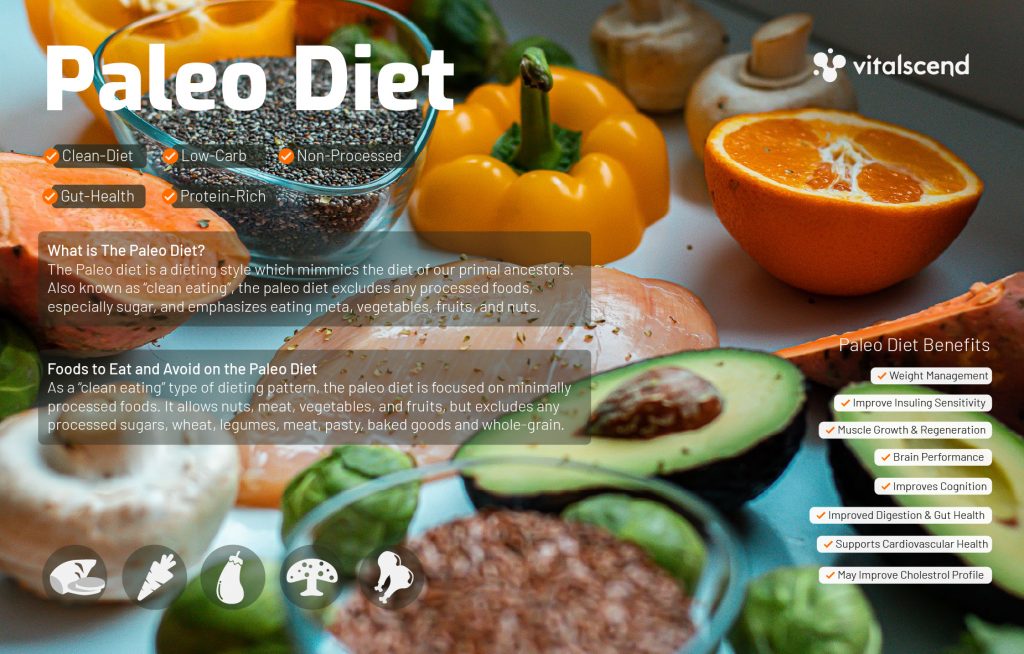
Health Benefits of the Paleo Diet
Many athletes adhere to the Paleo Diet, which is simply a clean diet emphasizing eating whole foods. In terms of health benefits, especially for recovery, energy, and inflammation – the Paleo diet is one of the best. Main reason? Not eating processed foods.
Potential Benefits of the Paleo Diet Include
| Managing Diabetes | Reduce Sugar Craving and Insulin Sensitivity |
| Body Composition | Increase Muscle Growth and Fat Loss |
| Brain Performance | Improve Cognition, Focus, and Alertness |
| Gut Health | Feeding the Good Gut Bacteria, Improve Digestion |
| Enhance Sleep | Improve Mood, and Regeneration |
| Heart Health | Cholesterol Reduction and CVD Prevention |
The most potent effect of the Paleo diet comes mainly from reducing sugar and processed and fried food. It emphasized eating veggies, meat, fruit, and nuts and excludes legumes, whole grains, pastry, and baked goods.
Just by changing the food pyramid, it positions you to eat more protein (meat), vitamins (fruits), and minerals (vegetables) while avoiding sugar spikes from too many carbs (cakes, chocolates, baked goods). It is easier to stay lean on it, as carbohydrate intake is lower.
Paleo Food Pyramid
Paleo Diet is more of a staple than a strict dietary pattern. To understand how to eat on a paleo diet, I’ll show you how a Paleo plate looks and what the Paleo pyramid allows. Now different nutrition experts put veggies and meat at a different places, but in general meat, seafood and eggs are at the base, veggies, and fruits up.
The Base
The Middle
The Top
Foods that dominate the plate, and make up half or one-third of it.
- Meat: organic chicken, grass-fed beef, wild-caught fish
- Nuts: almonds, Brazil nuts, pistachios, cashews, and walnuts
- Eggs and Dairy: eggs, grass-fed butter, and goat cheese
Foods incorporated almost every meal, mainly vegetables which make up one-third to a half of the plate
- Green Leafy Vegetables: spinach, broccoli, Swiss chard, bok choy, collard greens, kale, romaine lettuce
- Starchy Vegetables: sweet potatoes, carrots, beetroot, acorn & butternut squash, peas, and parsnips
- Healthy Fats & Oils: Coconut oil, grass-fed butter, extra virgin Olive oil
Foods eaten in smaller amounts, as a snack or main meal additions, as well as a side dish
- Fruits: banana, mango, nectarine, peach, avocado, lime, apple, cherry, apricot, pineapple
- Berries: blueberry, cranberry, blackberry, strawberry, raspberry, and gooseberry
- Seeds: chia seeds, flax seeds, pumpkin seeds, sunflower, and hemp seeds
- Extras & Drinks: Coconut flour, dried fruit, coffee, wine, and plant teas.
Paleo Plate Example
This is an example of what a paleo plate looks like, so you’d get a sense of what to eat.
| Plate #1 | Organic chicken with mushrooms, avocado, and leek with olive oil |
| Plate #2 | Grass-fed beef with carrots and sweet potatoes, plus flax seeds on top |
| Plate #3 | Wild-caught salmon with coconut, spinach, and peppers, apple for dessert |
| Plate #4 | Shrimps with lemon, onion, leek and peas, wine, and dark chocolate |
| Plate #5 | Duck meat with broccoli & carrots. A handful of almonds and 1 banana for dessert |
Different individuals, add different portions of each food to fit their macronutrient needs, especially athletes. So just know that adding more starchy veggies will be a higher carbohydrate option while adding more nuts, avocado, and coconut is fat dominant, and adding meat and green leafy veggies is a protein & fiber-packed meal.
Research Limitations
*Studies have some limitations, important to evaluate the validity of their results. Here’s a highlight of some and NOT ALL studies (and limitation), shown in this article, for context.
- Further long-term follow ups, and randomized controlled trials are needed for stronger evidence.
- Studies with very small sample size * (n)12.
- Further research needed to asses specific effects of gluten on human health.
- Long-term effects have not been examined in randomized controlled studies.
- Studies which only include one gender (male or female).
- Non-conclusive evidence, results must be cautiously interpreted.
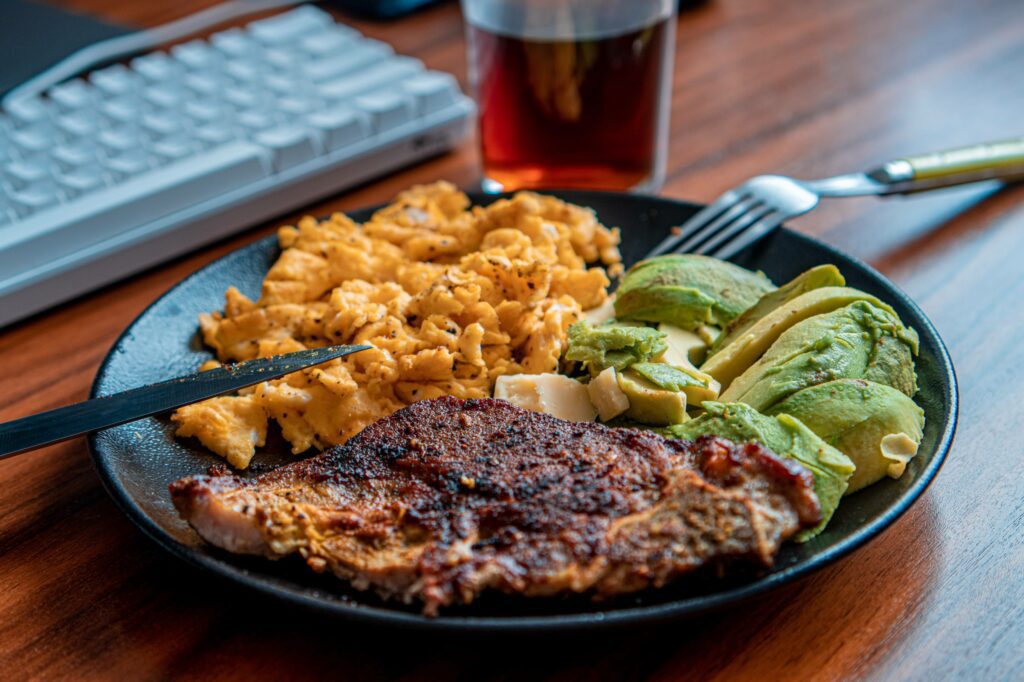
Pros and Cons of the Paleo Diet
All diets come with some potential benefits and side effects. Each diet will work differently on different individuals because of genetic interference. However, there are many specific characteristics of a diet that has common benefits or side effects for the majority of people.
Paleo PROS
Paleo CONS
- Muscle growth: high protein and healthy fats can improve muscle protein synthesis, while low-carb may improve HGH levels. Plus the diet itself provides good quality amino acids or complete protein that comes from meat, seafood, eggs, and nuts.
- Weight-loss: paleo practitioners find it easier to lose weight due to the satiety-promoting effects of fat & protein, plus the sugar cravings are reduced significantly. This may aid in the Keto effect of using fats for fuel, which burns fat more efficiently.
- Sugar-stabilization: In diabetics, insulin sensitivity is a problem. Paleo eaters have mostly low glycemic index foods, due to excluding grains, wheat, and processed sugars. This may help people with unstable sugar levels since there is no such need for insulin secretion – no energy crashes, nor unstable sugar levels.
- Sleep & Mood: Some evidence shows that excluding carbs not only reduces sugar cravings but balances brain endorphins which makes it more likely for you to experience euphoria and have a proper sleep schedule. Tryptophan-rich foods may have the potential to influence serotonin, the happiness hormone, and melatonin, the wake-sleep cycle hormone.
- Energy boost: As on a ketogenic diet, high-fat low-carb paleo practitioners may experience higher energy, in terms of energy efficiency and stability, since each fat is 9kcal and produces more energy per unit of oxygen.
- Regeneration & Development: whether we are talking skin, bones, muscles, or connective tissues, a high intake of meats, eggs, low-lactose dairy, and nuts do contain crucial building components such as zinc, B vitamins, and proteins.
- Simple & Practical: the diet itself is not that hard to be understood, nor it is too restrictive. Eating animals and plants, excluding processed foods is a staple of it. So knowing your food choices without the need of counting calories, nor macronutrient ratios make it easy for most people to follow.
- Reduced Inflammation: Paleo may significantly reduce inflammation, similar to the carnivore or keto diet, mainly due to reducing carbohydrate intake and processed, refined sugars which are major causes of inflammation. Since chronic inflammation is the origin of most diseases, reducing it may cut the risk of many heart-related or neurodegenerative diseases.
- Restaurant eating: Paleo may get tricky if you are an outside eater. In reality, it is a pretty versatile diet, however, you should be cautious regarding the sauces, spices, and marination. You should read the menu, find a paleo-friendly meal, and ask for different oil, and sauce, or exclude some food from the plate.
- Carbohydrate restriction: carbohydrates are not as evil as the media might present them. What’s bad is refined sugars, stuff like donuts, pastries, croissants, sodas, etc. But excluding whole foods, wheat, grains, and legumes is not necessary for all people and may reduce fiber intake.
- Sports Performance: Paleo may improve or hinder athletic performance depending on the sport. For fast and glycolytic sports such as sprints, weightlifting, basketball, etc., glycogen refuel is most important. Paleo foods are low GI and will not be as effective in refueling glycogen storage.
- Sugar cravings: Many people will suffer sugar cravings in the beginning, but this is the case with any high-fat, low-carbohydrate diet, which also may require an adaptation phase in which the gut microbiome changes its bacteria for meat and veggie-friendly foods, instead of sugar-dissolving ones.
- Adaptation phase: switching from a high-carb diet to paleo may result in brain fog, energy loss, or diarrhea, due to increased protein and fat content. However, if you stick to it, your body will most likely adapt and there will be no problems. Change in mood and sleep is expected, due to potential hormone imbalance at the beginning, since sugars affect a good portion of your hormones that regulate sleep, mood, cognition, and behavior.
Paleo Diet vs Carnivore Diet vs Keto Diet
What is the main difference between these three popular diets?
Many people believe this diet is very similar to the Ketogenic, Carnivore, or Atkins diet which is not really the case. The Paleo diet does not limit carbs, but its base does not contain many high-carb foods, besides some starchy veggies and fruits.
Well, the Paleo diet can be both keto and carnivore, but it is not necessarily simply because paleo has a wide variety of foods. Now for people who choose a high-fat low-carb option, they may run into ketosis and get similar keto-effects. Those who only eat meat, mostly animal-products like heavy cream hard cheese, are more on a flexible carnivore diet.
The main differences between these diets are:
- The Keto diet is Macronutrient restrictive, offering up to 75% fats, only 5% carbs, and 20% protein.
- The Paleo diet allows fruits and starchy, higher carbohydrate vegetables and it is supposed to mimic the ancestral diet.
- 100% Carnivore is only animal-based, allowing water and bone broth for drinks only, without any plants.
Now the idea behind them is:
- The Keto diet should burn fat for fuel and take ketones into the brain, in a state known as ketosis.
- The Paleo diet may provide additional health benefits by excluding processed sugars for diabetics.
- Carnivore is created as an anti-inflammatory diet, great for muscle growth & weight loss.
Keto Diet
Carnivore Diet
Paleo Diet
Now keto diet is more specific to inducing ketosis in comparison to the carnivore or paleo diet, because of the macronutrient optimization. While Paleo and carnivore eaters may occasionally experience ketosis, that’s not the main goal of the diet itself.
Carnivore is a lot more food limiting and Keto is a lot more macronutrient restrictive, so for the majority of the population looking for an easier way to lose fat, improve brain performance, boost mood and energy, improve sleep and build muscle, paleo is the least risky option here.
Primarily, the benefits that we’ve mentioned before, including reducing inflammation are all contributed to cutting high sugar, glucose-containing foods, and processed sugars. This may further improve the state of insulin-resistant people, as well as mental alertness, cognitive function, and neuroprotection. Paleo is the less restrictive path.
A lot of people think that going Carnivore is going keto at the same time since you mostly fuel up on fat and protein, but this is not the case. While the Keto diet has intentionally set moderate protein amounts of around 20-25%, carnivores may run a lot higher, up to 50%, and more protein depending on the meat macronutrient profile. This will then result in the conversion of protein to glucose in a process called gluconeogenesis in the liver which will throw you out of ketosis.
conclusion
The Paleo diet is an ancestral style of eating which includes meat, eggs, healthy fats, nuts, fruits, and vegetables while excluding all processed sugars, whole grains, wheat, and legumes. It is primarily made to mimic a primal or caveman diet that assists in greater immune function. The main benefits include improved brain performance, heart health, weight loss, fat loss, regeneration, lower inflammation, more energy, and better sleep. Contrary to popular beliefs, Paleo isn’t necessarily a low-carb high-fat diet but can be manipulated to fit everyone’s lifestyle. It does have some similarities to Keto and Carnivore diets, but it’s a lot more versatile, practical, and less restrictive.


